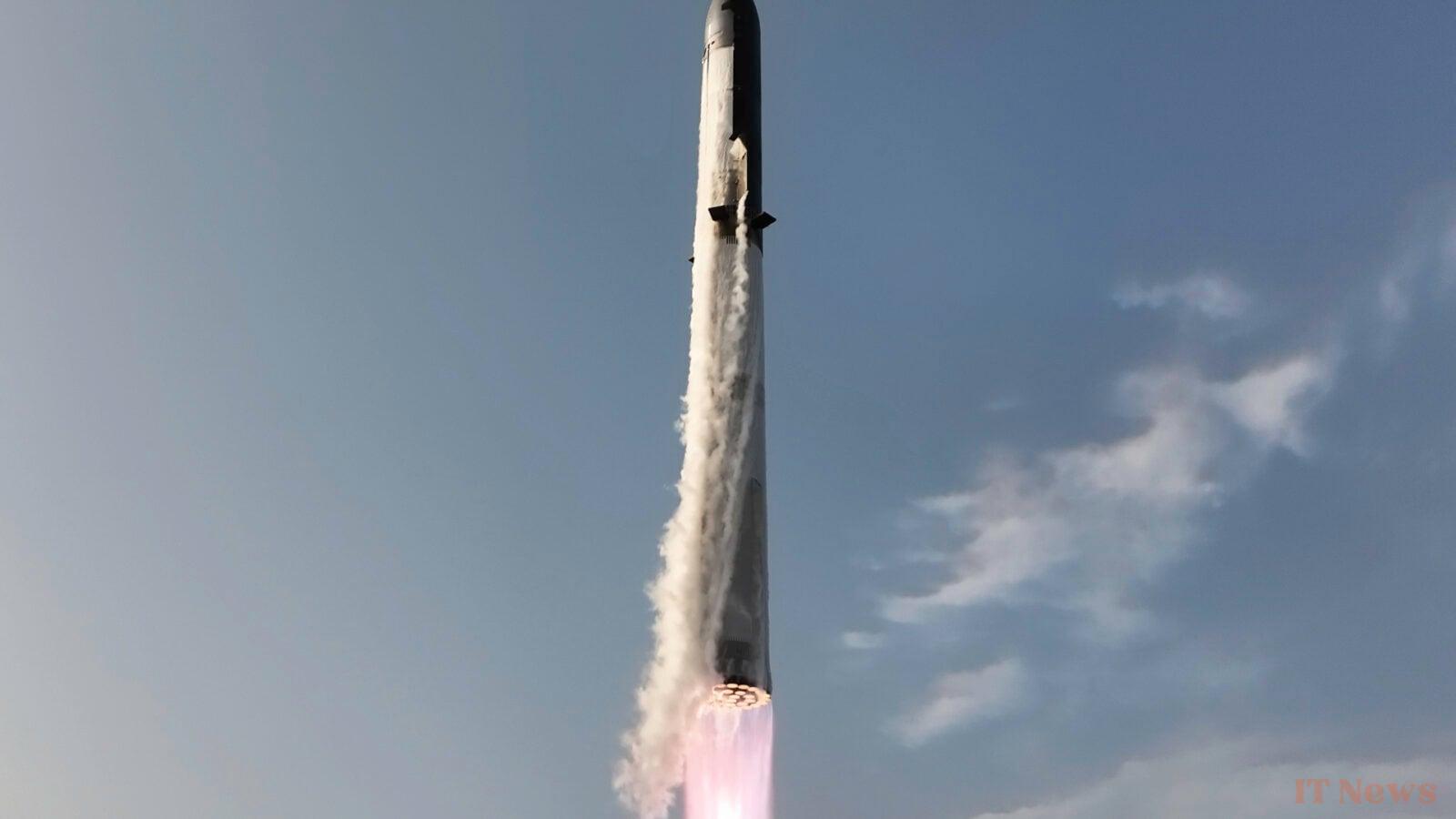Starship is back after its last flight in early March, which once again ended with a shower of shooting stars in the Caribbean sky, the result of an explosion of the second stage, and hundreds of pieces of debris disintegrating in the atmosphere. For its ninth flight, the SpaceX teams did not seek to simplify the task. Rather than aiming for a flawless flight, the American company detailed a risky roadmap, including the first reuse of an entire booster, the Super Heavy first stage called "Booster 14," which had been used on the seventh flight.
Three risky exercises during Starship flight 9
The mission also included another major exercise, planned after the separation of the first stage from the second. To return the booster, SpaceX chose to operate a trajectory with a higher angle of attack, in order to limit fuel consumption when braking the behemoth. By spending more time hovering in the atmosphere, SpaceX intended to use air friction to further slow the booster without having to use the engines. The engines were therefore to be activated only in the final seconds, to break up any remaining speed before splashdown.
"By increasing atmospheric drag on the vehicle, a higher angle of attack can result in a lower descent velocity, requiring less propellant for the initial landing burn," wrote SpaceX in the mission overview. "Obtaining concrete data on the booster's ability to control its descent at this higher angle of attack will help improve the performance of future rockets, including the next-generation Super Heavy."
As if that weren't enough, Starship Flight 9 was also intended to simulate a failure of one of the first stage's Raptor engines. By leaving it off, another engine would take over as backup. A way to secure, for later, the Super Heavy's returns to its launch pad, and the recovery maneuver by the Mechazilla articulated arm. As a reminder, SpaceX has already successfully recovered its Super Heavy first stage three times, but has so far not suffered any failure that would have led to an explosion and significant damage to its infrastructure in Boca Chica, where SpaceX has its new city "Starbase".
A leak, a loss of pressure, then a gigantic splash
In fact, the ninth Starship flight, which took off on May 27 in the late afternoon from Texas, and on May 28 during the night in France, was unable to attempt to simulate a failure of one of its engines before the splashdown phase. The Starship's first stage failed to slow down sufficiently with its angle of attack, and a leak caused a loss of pressure in the tank during the descent phase and atmospheric reentry, announced Elon Musk, who also declared that he had "a lot of interesting data to analyze." He could be pleased, having obtained authorization from the FAA to fly Starship once every three to four weeks in the coming months...
Downstream from the mission, SpaceX returned to the subject of the complete reuse of its booster 14 and indicated that it welcomed the opportunity this would offer in the future to increase the rate of takeoffs of the giga-rocket. "Lessons learned from the first booster refurbishment and subsequent flight performance will enable faster turnarounds of future flights as progress is made toward vehicles that require no hands-on maintenance between launches," the company wrote.



0 Comments